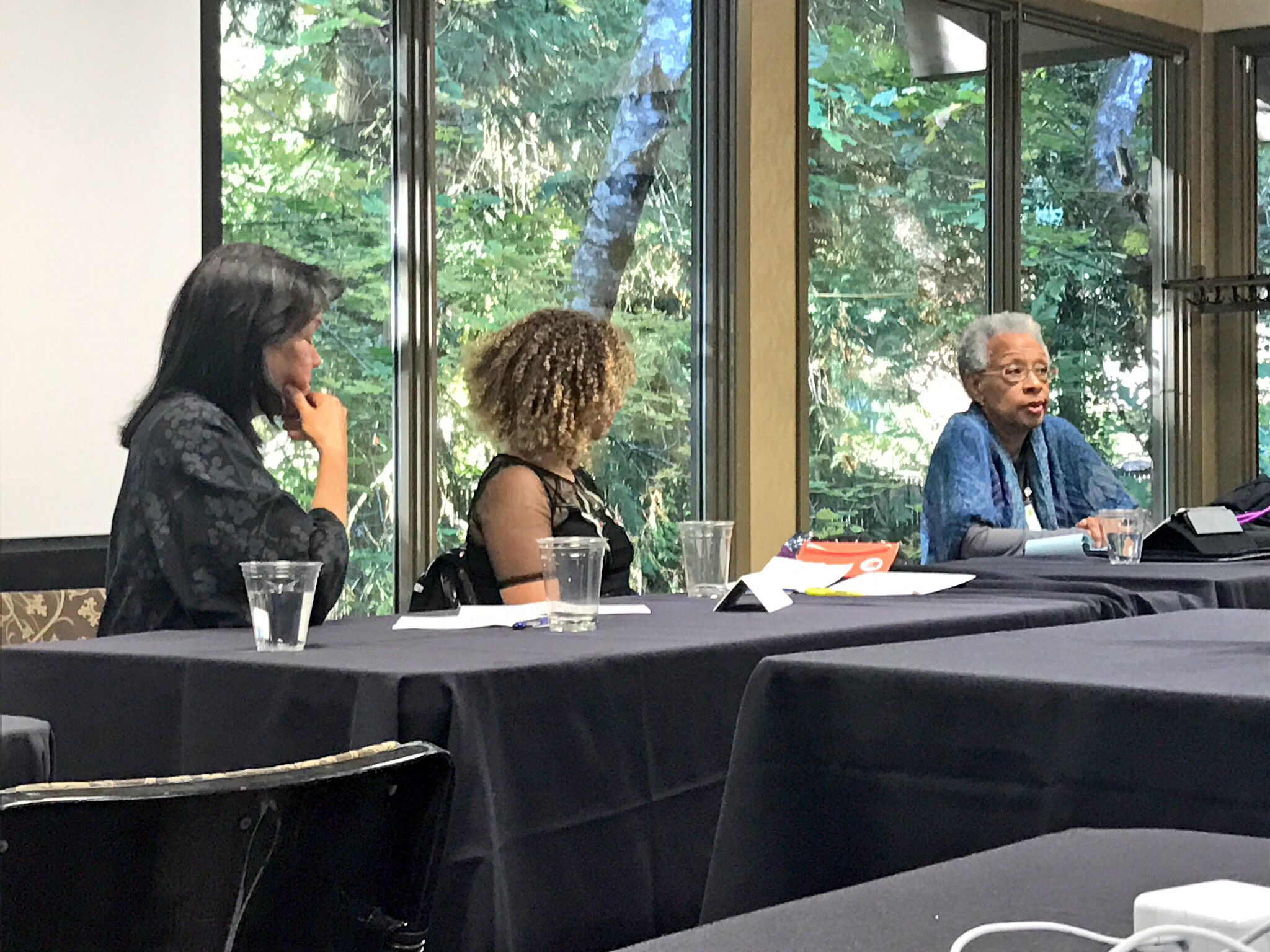Diversity and inclusion in your newsroom affect both the stories you tell and the ways in which you tell them. Oftentimes, building diverse teams isn’t something that happens naturally. It requires intention and goal-setting, even when it’s difficult or awkward.
At the annual Journalism and Women Symposium Conference and Mentoring Program (CAMP), in a breakout session “Let’s get intentional: building diversity into your news team and news content,” panelists and attendees discussed actions that media organizations can take to increase diversity and inclusion in their newsrooms.
At the beginning of the session moderated by Sheila Solomon, an expert in newsroom diversity and consultant at the Democracy Fund, panelists made clear the difference between diversity and inclusion.
“Diversity is getting people in the room,” said Summer Fields, an engagement consultant at Hearken. “The key next step is [exploring] how you can make them show up as their full selves.” This — the ability for team members to feel comfortable leaning into their full identity — is inclusion.
Without diversity, you can’t focus on inclusion, so the first step is being intentional about what kind of diversity you need to do your job, said Tracy Matsue Loeffelholz, editorial director at YES! Media. When she first started at YES!, a publication that covers diversity and social justice, in 2006, the majority of employees were white. The team realized they needed to make a strong push for more diversity in order to effectively cover the stories and communities that mattered to them.
Loeffelholz said that once you’ve set an intention for more diversity, you need to implement processes to track and measure progress.
“There’s no way to be accountable unless you start counting,” she said, admitting that it can be awkward and challenging, but critical nonetheless.

Once they outlined the type of newsroom they wanted at YES!, they were able to implement policies that would move them in the right direction. One thing that panelists, and attendees, agreed upon was the importance of building a pipeline of diverse voices. This means investing in young journalists and writers at college and in early career stages.
The team at YES! did this in a few ways. First, they made their internships and fellowships paid, so as to not limit the pool of applicants by economic privilege. Second, they made the internships intentionally focused on building diversity.
At a time when funds are tight in many newsrooms, paying interns is often quickly discounted on economic grounds. Panelists suggested looking for grants to fund a program for young journalists, since diversity is a major focus for many funders. YES! obtained foundation funding to implement a diversity in solutions journalism internship in their newsroom.
Attendees discussed other ways to build a pipeline of diverse newsroom employees. College professors in attendance suggested making classes accessible to students of all backgrounds and experience levels. They mentioned designing assignments that require limited time outside class to better accommodate students who work.
Then, as Fields mentioned above, having diverse staff in the newsroom isn’t enough. You have to make sure that they feel included, that their voices are heard and that their experiences are considered. To do this, it is important to first expel any myths in your newsroom that lived experience is equivalent to bias.
Another suggestion Fields made is to ask people on your team, “What communities are you a part of? What do you experience in your daily life that we might not know about?” People in your newsroom might have more diverse opinions and experiences to offer than you see on the surface.
At the end of the session, panelists and attendees worked together to brainstorm a list of actionable steps to take towards increased diversity and inclusion. The list includes:
- Implement inclusion and diversity working groups
- Build a pipeline of diverse journalists
- Be upfront about pay when hiring
- Don’t ask salary history
- Be flexible with internship compensation — include housing or transportation
- Offer shadowing opportunities for young journalists
- Set up mentorship programs
- Cover unforeseen expenses
Let's Get Intentional: Building Diversity in your news team & content
If you have other methods or ideas for encouraging diversity and inclusion in the newsroom, we’d love to hear them. Tweet @IJNet or post in the IJNet Forum on Facebook.
Main image CC-licensed by Flickr via WOCinTech Chat.


